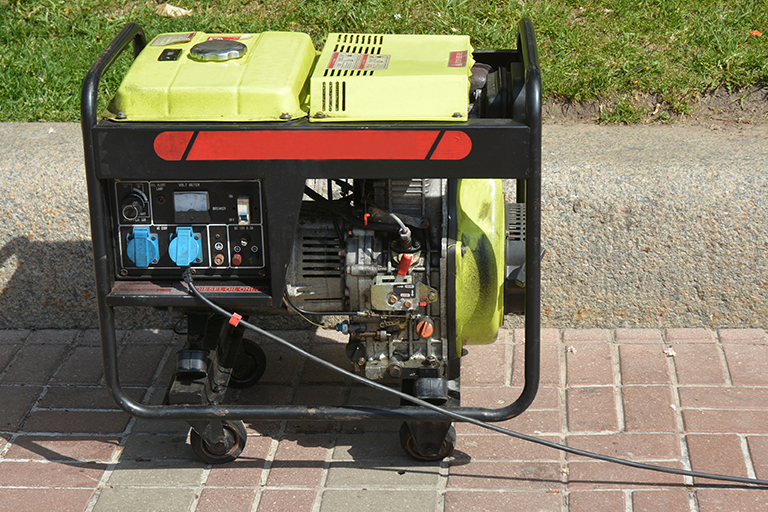By James Dulley
Many homeowners install portable or large whole-house emergency backup generators because most home activities require electricity in this day and age. Power outages are not from just storms or accidents. During the summertime, with high air-conditioning loads, there are also sometimes brownouts.
Even running on inexpensive natural gas, the cost to operate a generator is more than your current electric rate. However, since it typically runs for a relatively short time, the operating cost is not significant. Running a backup generator continuously also wears out the unit because it is not what it’s designed for.
When selecting a backup generator, determine what you want to keep running during an outage. This impacts how large (output capacity) a unit you need. Having enough power for cooking, refrigeration, lighting, television and operating a furnace blower are typical essential needs.
Electricity output from a generator is rated in kilowatts. For a typical family of four, a 12-KW backup generator is adequate to power almost everything. By doing without some appliances and not trying to do use many simultaneously, a smaller, less expensive a 5- to 7-KW unit should keep essential appliances running.
To properly size your generator, make a list of the electric items you want to keep running. Check the wattage on the nameplate of each item. This is called the total “running wattage.” Appliances with electric motors are inductive devices so they require additional surge “startup wattage.” This can be as much as three times the running wattage.
A sizing rule of thumb is to total the running wattages for the appliances you need to keep running. Add the additional startup wattage for the largest appliance to get the rated power for a generator. It is unlikely all appliances will start at the same time.
The “rated power” output of any generator, from small portable to fixed whole-house, is the amount of wattage it can produce continually. The “maximum rated power” is the amount it can produce for a maximum of 30 minutes. Running at maximum output for a longer period of time can damage the generator.
If you select a whole-house generator, which is attached to the breaker panel, install an automatic transfer switch with it for your convenience and for the safety of utility repair workers. When the ATS senses a power outage or brownout (low voltage), it disconnects your house from the electric grid and starts the generator.
An ATS will start and run the generator periodically to ensure everything is functioning properly. This is called exercising the system.
Natural gas is the least expensive and cleanest fuel to power a backup generator. The small engine requires very little maintenance. Propane is also clean burning, but it is considerably more expensive than natural gas and requires a storage tank.
A diesel-powered generator requires more maintenance and a storage tank. A big advantage is if the electricity outage is very long, you can easily dump more diesel fuel into the tank to keep it running. A drawback is diesel fuel has a limited useful life.
If you want to just keep a light, television and refrigerator running during an outage, get an uninterruptible power supply for your computer, which will also power your computer. Select one that has a maximum wattage greater than your refrigerator. Also, invest in an emergency car battery power pack. Most have a 115-volt inverter and outlet, but may not be powerful enough for the refrigerator. Plug the UPS into car battery pack to recharge the UPS. The car battery pack can be recharged from your car battery system.

